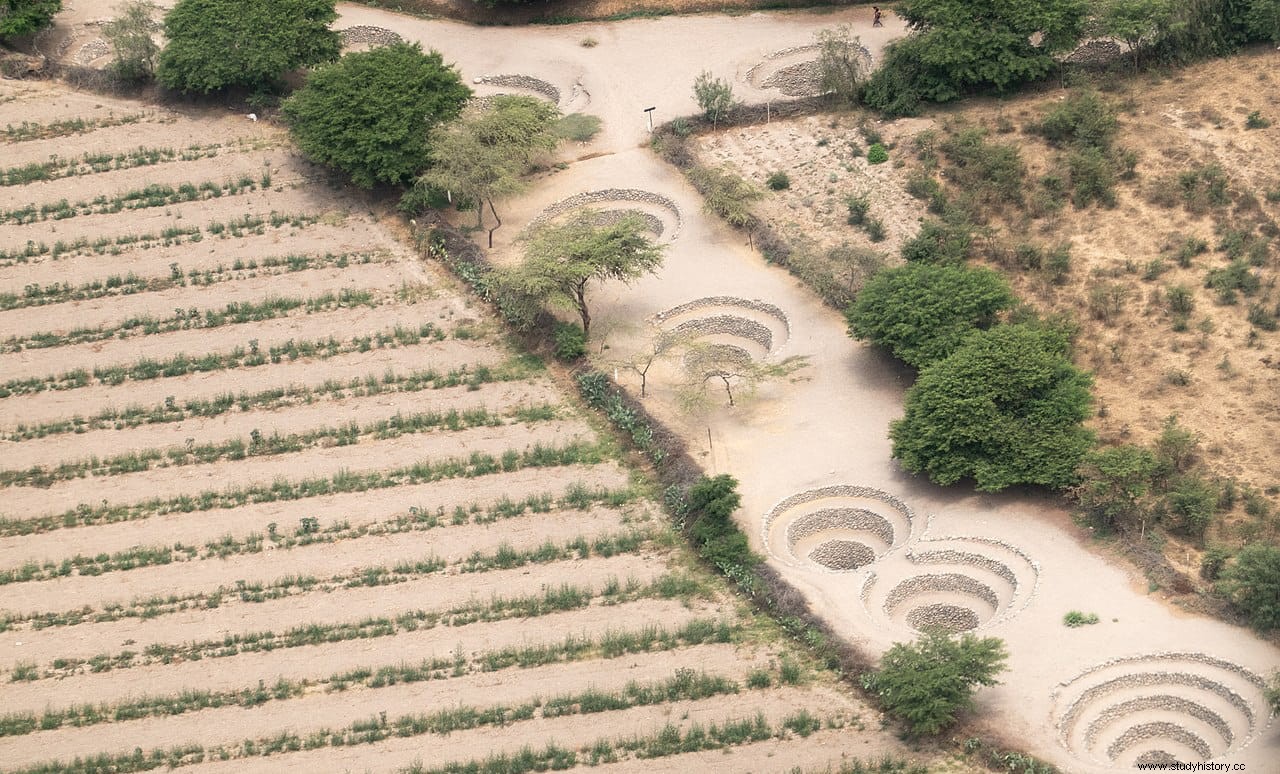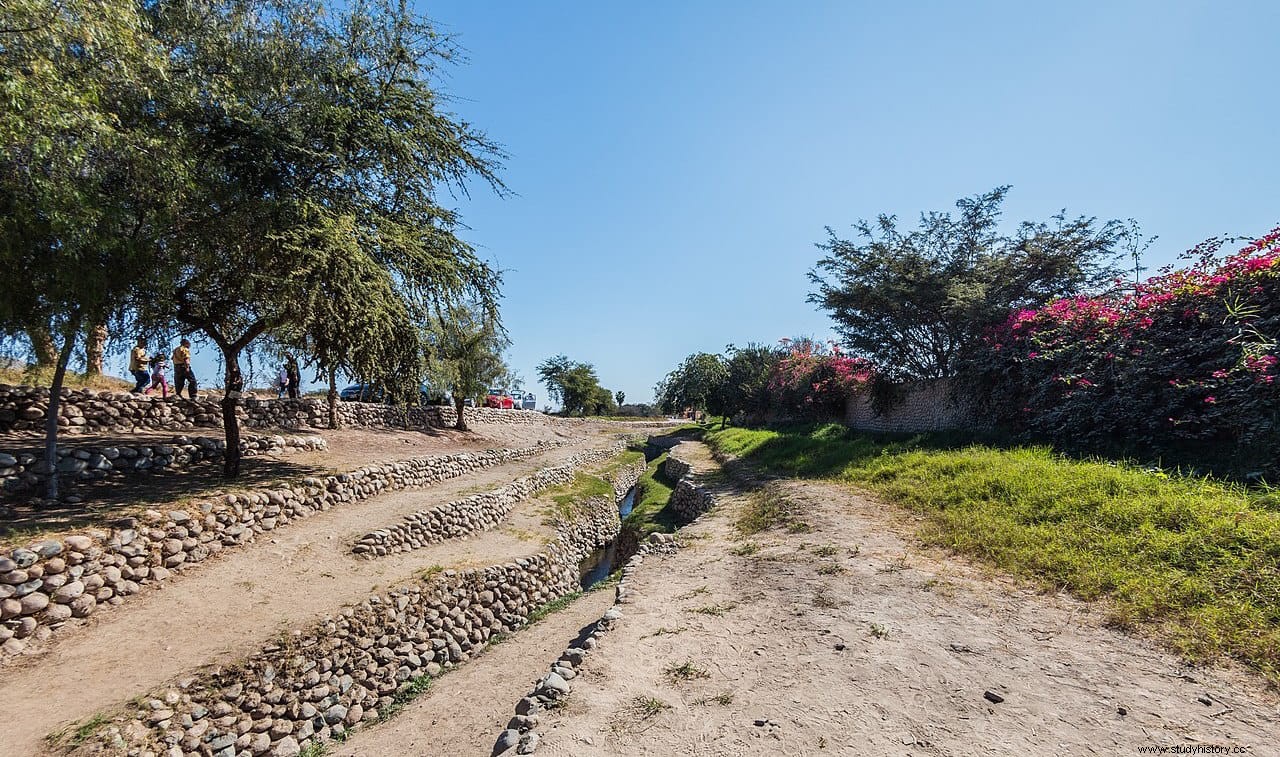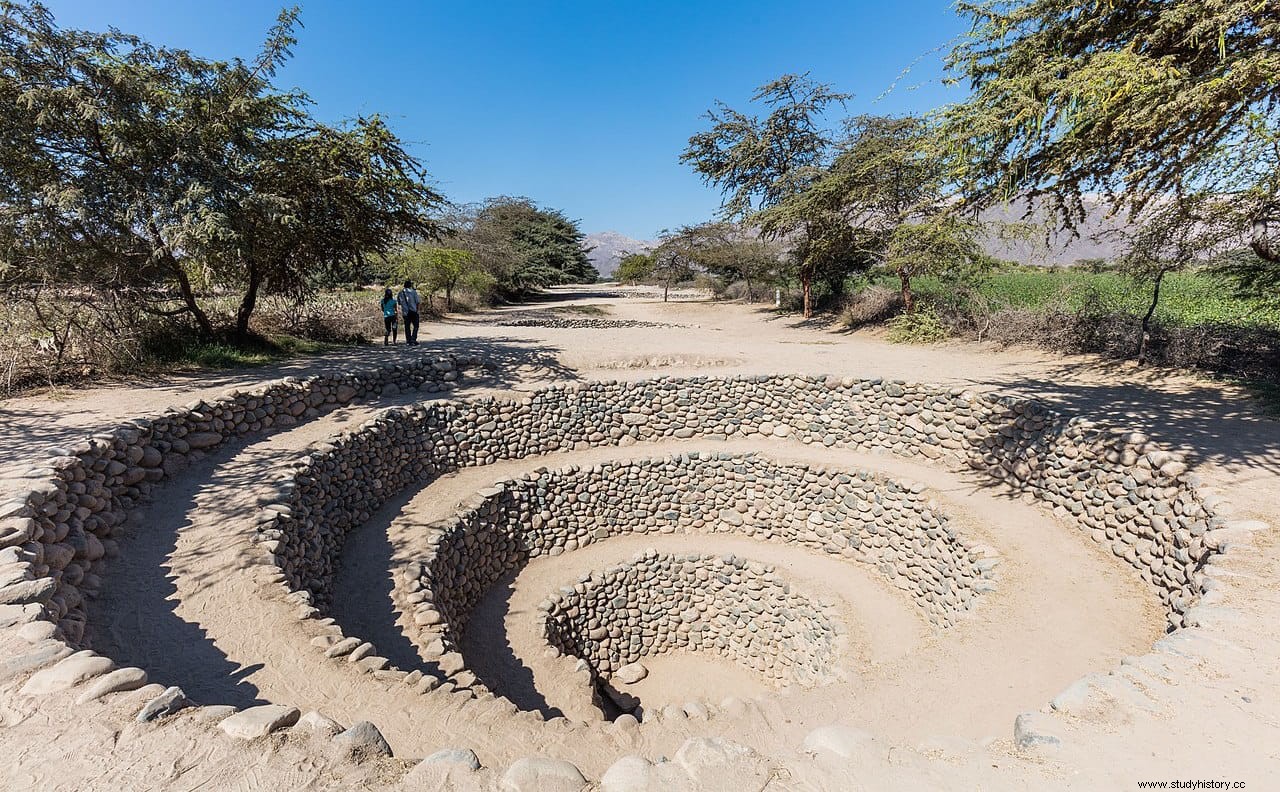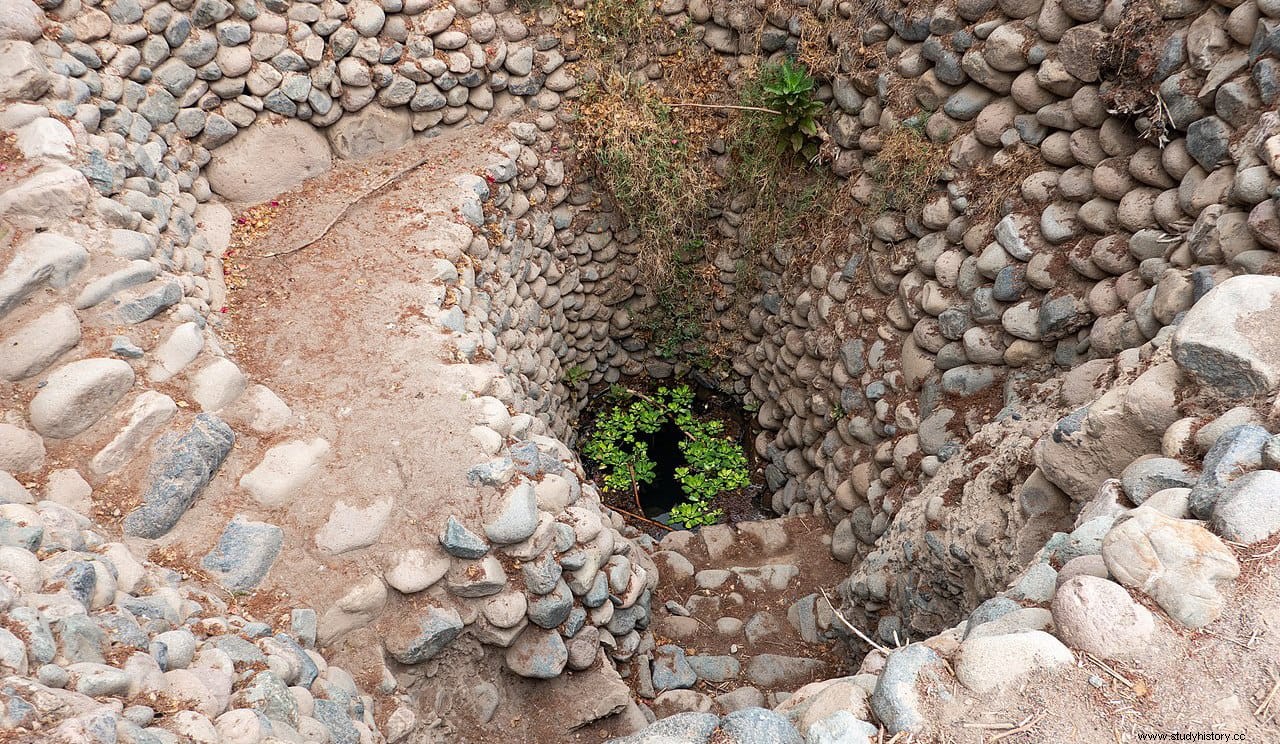The Nazca culture, which developed in the valleys of what is now the department of Ica in Peru between the 1st and 7th centuries AD, is famous for the impressive lines of the same name, made in the Pampas de Jumana, and which represent gigantic figures of animals, human and geometric motifs.
But the Nazcas also stood out for their advanced technology and hydraulic engineering, building an impressive network of aqueducts, canals and wells that allowed them to permanently supply water to farmland.
This set of aqueducts, canals and wells are called puquios (from Quechua pukyu , which means source, spring or well) and more than 40 have been found, most of them in use today.

They were used to bring fresh water for irrigation and domestic use to desert settlements, and although their dating is disputed, their construction has been estimated around 500 AD. Some aqueducts and puquios in other parts of Peru and northern Chile (where they are called socavones ) may have been built already after the conquest of the Inca empire in the 16th century.
Those who believe that they are the product of technology of Hispanic origin argue that the puquios do not differ substantially from mine drainage techniques, of which the Potosí mine is an early example, drained by underground channels as early as 1556 following the instructions of the Florentine engineer Nicholas of Benedict.

Those who defend their pre-Hispanic origin believe that they were built after the dry season that began around 400 AD. and which lasted for several centuries until about 1100 AD.
The settlements in the river valleys of the 6th century would have been stimulated precisely by the water supplied by the puquios. This is currently the general consensus, even though no method has been found to date them precisely.
There is even a hypothesis, defended by David Johnson, that relates the puquios to the famous Nazca lines. These would be maps and plans of the underground aquifers that feed the puquio system. However, it is not a very popular hypothesis.

The Nazca puquios are located at an altitude of about 500 meters along five of the nine streams that feed the Río Grande de Nazca during the rainy season (most of the rest of the year they are dry):Las Trancas, Taruga and the Nazca, which has two tributaries, the Tierras Blancas and the Aja. The sources of all these rivers are in the Andes, some 70 kilometers away.
The most famous puquios are the so-called Cantalloc Aqueducts, located about 4 kilometers north of the city of Nazca. To make these aqueducts, several wells separated between 20 and 50 meters from each other were first dug. Then, once the water table was found, the water was channeled through underground channels to lead it to the deposits or cochas from where the valleys were irrigated.

The aqueducts of Cantalloc (of which the most important are those of Ocaña, Matara, Uchulla, Tejeje, Bisambro, Cantillo, Aja, Curve, Llícuas, Soisonguito, Copara and Achirana) were built as underground tunnels made of flagstones and logs of huarango.
At intervals of about 10 to 30 meters they present ventilation shafts in a typical spiral shape called eyes , for which it was possible to go down to the subsoil to carry out cleaning and maintenance of the system.
These underground aqueducts usually have a height and width of 1 meter, although some more modern reinforced with wooden beams (and more recently cement) can reach 2 meters in height. The length of the puquio galleries ranges from a few meters to a few hundred, the longest being 372 meters.

Thus the Nazca agricultural society flourished where surface water was scarcest. The puquios were the technology that allowed the existence of an important population in an intensely arid region.
At the end of the 16th century, the area was noted for its viticulture, to the point that some travellers, such as Clements Markham, described it as the most fertile and beautiful place on the coast of Peru .
